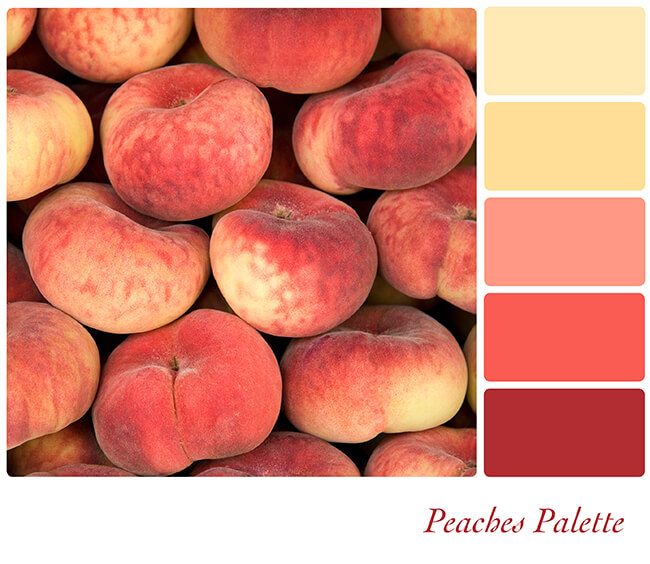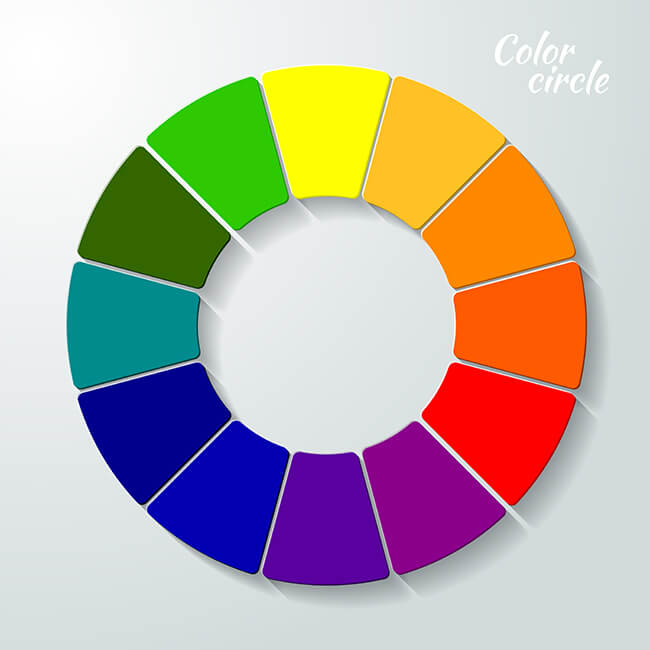What Colors Make Peach? How to Make Peach Color
In this article, we answer the question “What colors make peach and how to make peach color?”
What comes to mind when you think of the color peach? Besides the obvious (peaches), what feelings and sentiments do you experience when you see this color in a painting, or on a wall?
For the most part, peach may seem to be a rather benign hue, but the fact is that a lot is going on beneath the surface.
Today we’re going to dive into the world of the color peach and try to understand it better.
Not only are we going to look at what colors make peach, but we’re also going to look at how it can be utilized in the world.
Perhaps you’re an artist looking to expand your color palette. Perhaps you’re an interior designer trying to find something that’s both soothing and bold.
Perhaps you just want to paint a room in your house.
Regardless of your needs, peach is a color that deserves your attention. Once you learn how to make the color peach, we hope that you’ll find inspiration for your next project.
When you know as much about hues and color palettes as we do, you realize that each one is vibrant and exciting.
So, join us, won’t you?
Color Theory: Peach
When talking about the different kinds of colors available to us, we first have to understand the core concepts of color theory.
This may sound a bit cerebral, but it’s imperative that you know why specific hues interact the way that they do.
Once we’ve created a foundation for different colors and their meaning, it’s much easier to understand how to utilize them in art and design.
The basic premise of color theory is that each hue exists on a spectrum. Most commonly, these are arranged in a color wheel.
Shades that are on opposite sides are considered complementary (think red and green), while those close to each other are called analogous.
Combining colors in various ways can further expand your overall palette, which is why it’s so essential to mix and match.
You never know what you can come up with when you experiment with different shades and hues.
When looking at the fundamental elements of color, we find that several primary hues contribute to almost everything else on the color wheel.
Depending on who you ask, these primaries are either red, blue, and yellow, or a combination of red, blue, green, and yellow.
However, considering that green is a mixture of blue and yellow, we don’t believe it to be primary (although your computer does).
Thus, the color peach would be considered an analogous shade. Since it mixes two variations of red and yellow, it doesn’t fall into the complementary category.
Peach in Design
Taking things a step further, we want to understand how different colors interact with our emotions.
What kinds of things do we imagine when we look at blue?
How are those images different when we look at the color red?
Breaking down hues into various categories based on emotion and visceral response is how we can figure out the best way to utilize them in design.
Warm vs. Cool Colors
On one end of the spectrum, we have options like red, orange, and yellow. Since these are found naturally in fire, they are considered to be warm, almost hot.
However, each one has a slightly different representation, meaning that orange doesn’t elicit the same reactions as pure red or pure yellow.
On the opposite side, we have cooler colors, such as blue, purple, and green. They are associated with nature and cooling effects, such as water or nighttime.
Since they aren’t warm, they don’t elicit as strong of a reaction as a warm color. Instead, blue, green, or purple make us feel calmer and more reserved.
As we already mentioned, peach is created by mixing various shades of yellow and red, which makes it a warm color.
However, the intensity can differ significantly depending on how much of each primary color you add, so there is a lot of variation in the kinds of reactions it can create.
For the most part, the peach is inviting and lively. It creates a sense of intrigue and passion without going too far in any direction.
It is seen as more of a calm, yet festive hue, which makes it ideal for a variety of design elements.
Artwork
At its core, peach can represent the food from which it derives its name. When lightened to be less orange, it can seem more luxurious and calming.
Interior Design
Many upscale restaurants like peach because it reminds people of food, but it also has a classy element to it as well.
Unlike pure orange which can seem a bit overwhelming, a light shade of peach can invoke similar feelings of change and energy without making it too obvious.
Elements of Peach
Obviously, if you simply pour yellow into red, you will get a healthy shade of orange.
As such, peach doesn’t exist as a result of the primary color wheel. Instead, it requires another shade altogether to make it work: white.
Depending on who you ask, white is either a color itself or an element of color.
The former classification implies that it belongs on the color wheel, while the latter suggests that it doesn’t.
For our purposes, we consider white (and black, for that matter) to be color elements. Although they are necessary for creating different shades and hues, they are separate from everything else.
Unlike black, which creates a dark and depressing color palette, white is a positive and uplifting element.
As such, colors that rely on white are going to be met with a more joyful reaction.
So, any colors on the wheel that require this element are much more lively and vibrant than those that need darker colors or elements to exist.
How to Make Peach Color
Now that we have a good understanding and background about the color peach, let’s answer the simple question, “what colors make peach?”
So, essentially the three ingredients for peach are red, yellow, and white, right?
Well, if you mix those three shades you’ll probably get something that’s peach-like, but it won’t look like the real deal.
Instead, we suggest that you mix white into red and yellow first and then mix the results. Peach is usually a result of both pink and lemon.
As with most colors that require mixing, you can adjust the shade of peach in one direction or another.
If you add more red to it, then it will start to look more rusty and orange.
If you add more yellow, then the result can be more of a coral or a fruity color. Adding white to a base peach hue will create a much softer and calmer effect.
When making peaches, we encourage you to experiment to find the right balance of pink, lemon, and white.
There is a fundamental difference regarding how you react to it when it either gets darker or lighter, so see how that changes.
As you can see, mixing colors to make peach isn’t a simple two-color combination. You have to mix several colors at various proportions to get your desired peach hue.
We hope that we’ve provided you with some fundamentals on how to make the peach color.
What Colors Go With Peach
Whether you’re adding the color to your next art piece or you want to use it as an accent to a room, it’s imperative that you also understand what complements it as well.
You want to use harmonious hues that will highlight the peach without overwhelming it or drawing away its attention.
So, with that in mind, here are a few color options to go along with your new shade of peach.
Blue
Since this primary color is not found anywhere inside the peach, it could be considered a complementary color.
Since it sits on the cooler side of the spectrum, it will enhance the peach coloration beautifully.
If you want them to be a bit more harmonious, then we suggest using a shade of blue that is similar to the one you have with peach (i.e. light to light).
This will enable them to blend well together and not create a lot of contrast.
Conversely, if you’re looking for a more dynamic and visceral reaction, alternate the shades (i.e. light to dark) so that it will create a sense of movement.
In that regard, remember that people’s focus will go from darkness to light, so keep that in mind. For example, if you want to highlight the peach, use a dark blue border, and vice versa.
Off-White
Although you could go with pure white as a complement to the peach, we don’t recommend it. This is because it will be construed as a negative space, which may or may not be a good thing for your project.
Again, remember that similar shades will blend seamlessly together while contrasting shades will create movement and make the lighter one pop.
Red or Yellow
Since these are the fundamental elements of peach, they can easily be used to create a color palette that invokes a lot of the same feelings.
Use a mixture of peach, red, and orange if you are looking for a warm, inviting space that can stimulate hunger and passion.
Alternatively, you can utilize peach, yellow, and white to create a brighter, more summery look, like an orchard in July.
Gray or Neutral Colors
A strange thing happens when you take a light hue like peach and put it next to gray, brown, or black.
Our eyes tend to mix the two shades, which means that your peach will start to appear less vibrant, regardless of how it was mixed.
So, if you’re going for a more modern, chic appearance, this is a great way to go. The peach will add a splash of color without going too far in one direction, and it will be seen as yet another “neutral” shade.
What Colors Make Peach Video
Bottom Line
When looking at what colors make peach, be sure to mix and match with other shades to see how it reacts with them.
Peach is a versatile and elemental hue, which means that it can be a welcome addition to all kinds of artwork or design.
So the next time you’re wondering how to make the peach color, just try adding red and yellow softened with white as necessary. Happy painting!
Read Latest Posts

Hi, I'm Anthony Tran! Welcome to my site. I live in Arizona and am obsessed with all things related to building an Online Business and working from home. Learn about my journey here.
Follow Online





